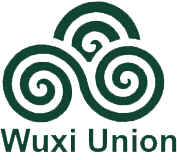The dish cleaning cloth made of different materials is used differently
The adsorption capacity of different cloth materials to stains can be divided into strong and weak. The following four common cloth materials have advantages and disadvantages in cleaning and use.
Towels and other cotton fabrics
The cleaning effect of this kind of rag is very good, but the cotton material has strong adsorption, and it is easy to be contaminated with oil, become greasy, and not easy to dry. At the same time, it is a hotbed of mold, and it is best to boil it with alkaline water often.
Bamboo fiber cleaning cloth
this cloth has good cleaning effect, it is made of natural fiber, non oil stick, antibacterial. Also good for glass polishing. sponge cloth
sponge cloth
The collodion cloth looks like a sponge, but it is actually made of polyvinyl alcohol polymer material, which is more elastic, corrosion resistant and water absorbent. Usually, it should be washed with clean water. Sponge rags with good water absorption are very difficult to thoroughly clean, so it is best to put them in the microwave oven for sterilization 1-2 times a week.
Cellulose cloth
This kind of cloth has strong, and is more suitable for washing oil pans and oil pans. It doesn’t need too much detergent to use, and is an ideal dishwashing cloth. In addition, dishwashing cloth can also be made of traditional loofah pulp, which is both decontaminating and environmentally friendly.
Boil the dishcloth once a week
The rags that frequently touch the tableware need to be replaced in about a week or boiled with boiling water with a little alkali for at least 5 minutes.
After each use, the rag should be thoroughly cleaned with detergent. Pay attention not to wash it in a ball, but to wash it in sections in different regions, and finally dry it in natural ventilation. When disinfecting the rag, it can be boiled with boiling water or steamed in a pressure cooker for 10-15 minutes, which can kill common bacteria.
Post time: Mar-02-2023


